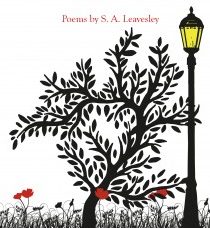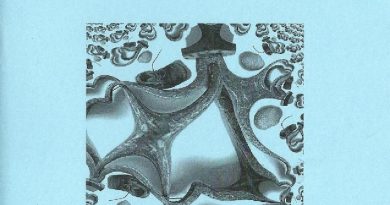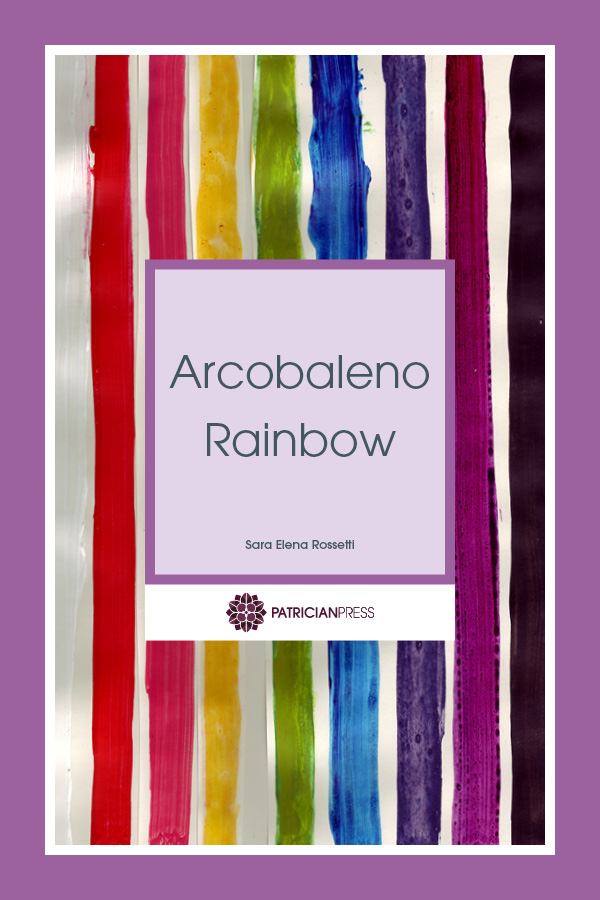Lampshades & Glass Rivers by S. A. Leavesley
– Reviewed by Rachel Stirling –
S. A. Leavesley explores loss and living in her new pamphlet Lampshades & Glass Rivers. Her work is both stark and delicate, skirting the edges of the unsaid. She turns again and again to themes of light and perception, beating out a pulse of pain in a way that feels necessary rather than sentimental or self-pitying. Her characters live honest lives, by which I mean that they have to reconcile themselves to the maybe, the perhaps and the never that life holds for them. There are things that they want which are never given and things given that they struggle to hold, but through everything there is continuity, a thread of days, the river of glass.
Leavesley’s snapshots have a piercing quality: the writing is clever without showing that it knows it. She is at her best when expressing visceral emotion through firm physicality. Everything is tied down to the material in a way that gives me the feeling that I might be swept away if I don’t focus. The poet very much wants us to see, to understand, but the light-bulb may be broken and understanding may not be completely possible.
Underlying the the beat of pain is the flow of potentiality, the possibility of creation even in brokenness, and the joy of beauty in bleak, wrecked things. The stars dance, life dances and while the river runs we have diamonds. This dance saves this little collection from bleakness: there is damaged hope here, but also defiant life. The language is deceptively simple, no parlour tricks. Leavesley likes to punctuate with alliteration but it isn’t hard-pressed or unnecessary. The poems are daintily built, with a fine eye to structure which belies the strength of the result. There are occasional sound games, a particularly delightful ‘sole ah’ reflecting both sound and light. A palindromic protagonist underlines the idea of a break in the flow, the unexpected, and time presses without ever being mentioned by name.
The pamphlet is written in the form of remembrances: we are asked what there is of us when we begin to lose these memories. The poet is emphatic: our being is in our bones, ever present even if unacknowledged, rooted and grounded in a belonging that we cannot escape even should we wish it. This rootedness is played to sinister effect:
…Roots burrow
upwards through the earth’s damp skinInto the skeletons of scarecrows
shivering.
she contrasts the natural and the unnatural, using darkness and shade to ghost and counterpoint the light. Loss seems simultaneously nowhere and everywhere in the natural world, causing a grappling with ideas that too large for us to hold – they slip away from us, like the dance of the moth at the lampshade. The shadows cast nevertheless belong to the light, both present and absent. Remembrances are nestled inside one another, one person remembering another, each holding the world as a fragile, shifting memory.
This is a suggestive collection. The poet, often with a word or the turn of a line, creates situations and events which arrive full-blown and technicoloured in the mind. I admire the the control with which this is achieved. Words which appear easy have been deftly chosen, small details implying vistas of experience. You will finish your reading knowing things and not realising how or why you know them, until you walk line by line through the verse. There are some difficult themes here – people who have suffered a recent miscarriage or bereavement might find this too exquisitely sharp an account. Other than that I have no qualms in recommending this work, and would be happy to read a larger collection.





